While holidaying in Europe, Paul Owen reckons he’s found the holy grail of car museums in Holland.
Den Haag, a.k.a. The Hague, may be the seat of international law but it’s also home to the world’s best car museum, in my humble opinion. I’ve visited most of the other contenders for this lofty title – the Petersen museum in Los Angeles, the twin-towered Honda museum at Motegi, the jaw-dropping Mercedes display at Stuttgart, and the Bugatti-laden Collection Schlumpf in Mulhouse, France.
Most of those have larger collections than the 300 vehicles gathered at the Louwman Museum. Yet they can’t match the sheer quirkiness, the flights of whimsy, nor even all the in-the-metal history on display at the Louwman facility. Here are some reasons why I believe it to be the finest car museum in the world:
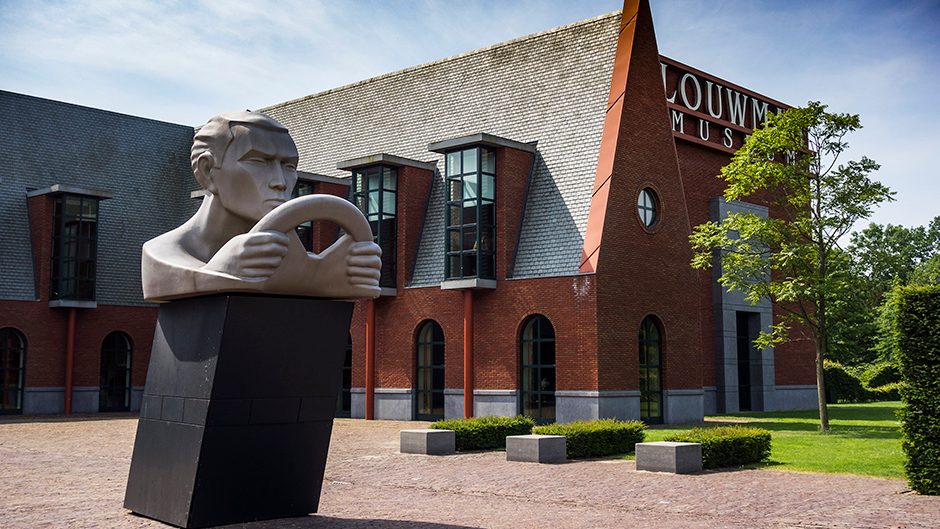
The Foyer
A sense of anticipation builds as you buy your 12 Euro ticket and are ushered into a foyer decorated by three of the most interesting mechanical beasts in the world, each flying the flag of its state of origin.
On my visit, the welcoming trio consisted of a 1948 Tatra 87, a 1938 Lancia Astura, and a 1986 Shanghai SH760A. A what? The Shanghai is a Chinese knock-off of a 1950s Mercedes-Benz, and was produced right up until 1991 when the forerunner to SAIC hooked up with Volkswagen. The rear-engine V8-powered Tatra, earlier examples of which Ferdinand Porsche used as a blueprint for the Beetle, and the Astura were some of the first cars designed by the then-emerging Battista ‘Pinin’ Farina. Mussolini loved the latter’s looks so much that he made it official government transport. Which is the link all three cars share – for they all were built to serve the political elite of respective totalitarian governments.
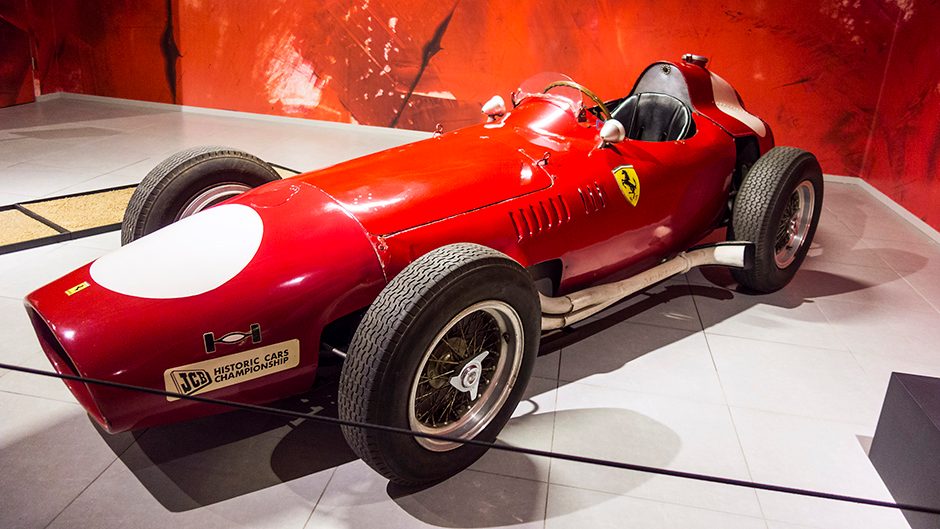
The Really Old Stuff
The Louwman houses the world’s largest collection of motor vehicles from the 19th Century, including an 1887 De Dion steam-powered quadricycle, considered to be the oldest working automobile in the world. All are housed in a reverential hall where lighting is kept to a minimum to replicate the gas and kerosene illumination of the period. It really helps to set the mood as you marvel at what were the first pieces that fell into place in the automotive jigsaw puzzle.
Obviously, motoring in the De Dion wasn’t the turnkey automotive experience that it is today. It took 50 minutes to build a head of steam, and the rocker arm-driven quad had a top speed of 60km/h. Little wonder then that Count Albert De Dion instantly started development of his own petrol engine when he saw Daimler’s first internal combustion effort in 1887. The first petrol-powered De Dion, a 1.5bhp tricycle, went on sale in 1897.
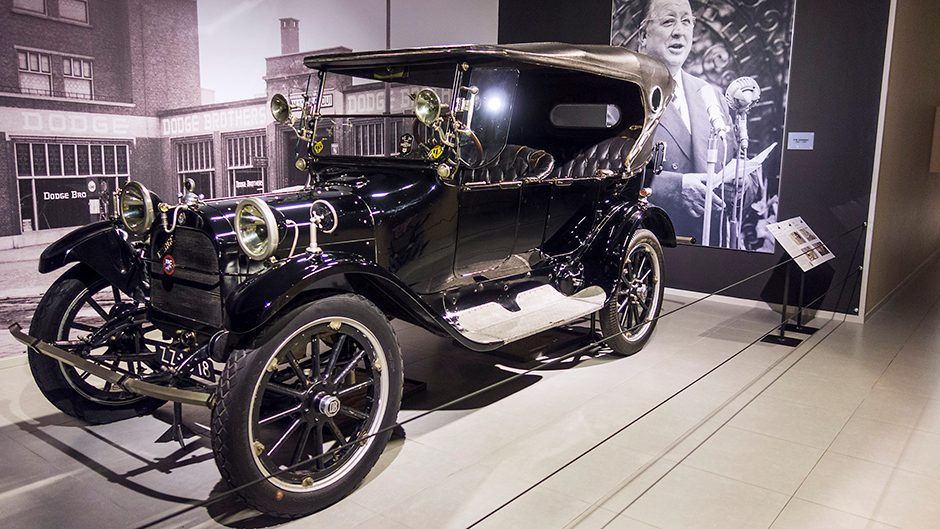
The three wise men behind the museum
Dutch Dodge distributor, Pieter Louwman, started collecting cars in 1934 with his purchase of a 1914 Dodge Touring car that was one of the first made by John and Horace Dodge.
Louwman was probably just looking for a starting point for his brand, something to add a touch of history to his office foyer at the time. But car collecting soon became an obsession for Louwman Senior. At the same time, another Dutch car collector, Geerlig Riemer, was also proving equally adept at tracking down and purchasing rare automobiles.
he Riemer and Louwman collections were combined in 1969, creating an exhibition of 230 cars. The current owner is Pieter’s son, Evert, who is the importer of Lexus, Toyota, and Suzuki cars to the Netherlands. It was Evert who commissioned American architect, Michael Graves, to design the present three-storey building with over 10,000 square metres of exhibition space.
Formerly known as the Dutch National Automobile Museum and the Louwman Collection, the Louwman Museum was opened by former next-door neighbour, Queen Beatrix, on July 3, 2010.
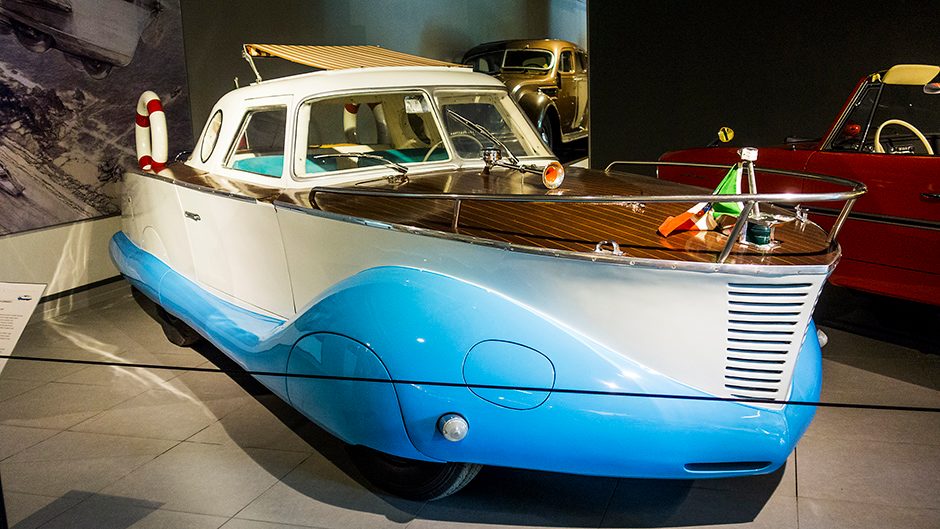
For all the times you think WTF is that?
Museums should educate their visitors, and the Louwman often does it in an amusing way. For example, I never knew that while American automobile designers were obsessed with turning cars into spaceships during the 1950s, their European counterparts were fixated on boats.
The 1953 Fiat 1100 that the Carrozzeria Coriasco fitted with portholes, a varnished wooden deck, and enclosed wheel guards painted to look like a boat cutting through the sea, took the theme to an extreme. Other journeys of discovery: the 1942 Breguet A2 electric car that the French plane builder manufactured during World War II to keep its workforce out of the clutches of Nazi labour camps. Oh, and a car bearing my own name: the 1915 Owen Magnetic M25-4, featuring a magnetic CVT transmission, and once owned by the great tenor, Enrico Caruso. New York-based R.M. Owen and Co. went bust in 1921 because the innovative ‘thousand speed’ transmission proved too expensive to manufacture.
Prize for weirdest car of the lot would have to go to the 1951 Italcorsa Tarf II, which basically looks like two torpedos joined at the hips and shoulders. Driver, Piero Taruffi, sat in the left side ‘torpedo’, his weight balanced by a 1.7-litre, supercharged Maserati engine in the right. The Tarf II set new records for the flying kilometre and flying mile by reaching speeds approaching 300km/h on the Via Appia, near Rome.
The Cars Famous Folk Drove
There were almost too many to list. There’s a 1976 8.2-litre Cadillac Fleetwood that was purchased by Elvis Presley just a year before his final journey. Famous movie props include one of the three surviving weaponised Aston Martin DB5s used in Goldfinger, and the 1941 Lincoln Continental Coupe in which Sonny Corleone (James Caan) is machine-gunned to death at a toll-booth in The Godfather.
The cars of famous historical figures also feature, including the 1954 Humber Pullman owned by Sir Winston Churchill, parked a discreet distance away from the last car owned by Kaiser Wilhelm II, a 1933 Mercedes-Benz Type Nurburg 500. General Bernard Montgomery, like Churchill, also favoured Humbers for their reliability and comfort, but is represented at the museum by the 1948 Sunbeam S7 500cc motorcycle that he rode until 1962. None of these cars made me weaker at the knees than the V8-powered buggy raced by Steve McQueen and his stuntman buddy, Bud Ekins, in the gruelling Baja 1000 desert race. The tubular chassis of the buggy was designed by NASA engineers, at the behest of General Motors, who supplied the small-block V8 engine.
Co-driver Ekins is best known as the performer of one of the more well-known stunts in a movie starring McQueen – the abortive motorcycle jump on a Triumph disguised as a BMW in The Great Escape.
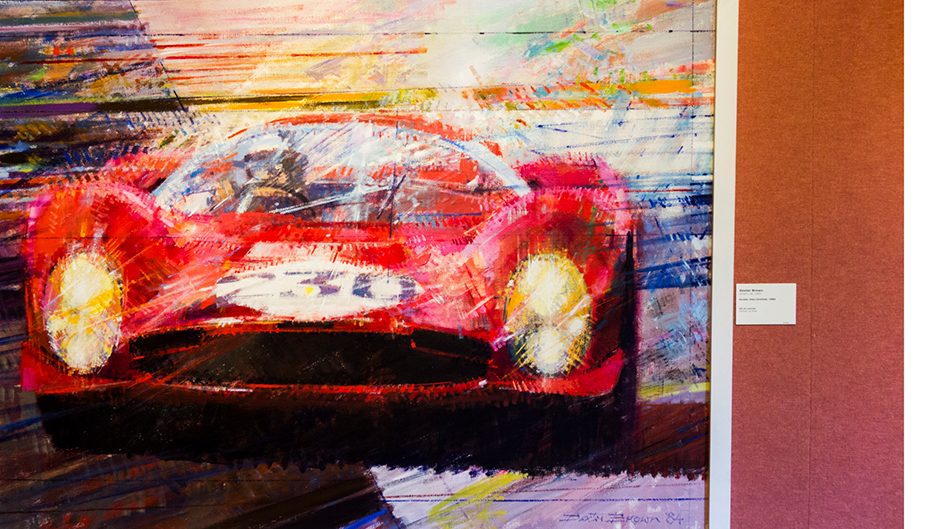
The Car Art
The building itself is an architectural masterpiece, but you’ll also find sculptures and art galleries dotted all over it to break up the mechanical exhibits. These feature art deco posters advertising the earliest automobiles, and the works of famous illustrators of early car mags such as F. Gordon Crosby, who made the original Autocar magazine such a visually-appealing read at times when photography was still developing.
My personal favourite of all these works was a large impressionist painting of a Ferrari P330 racing at Le Mans by Dexter Brown. Few art works so adequately capture the brutality and speed of motorsport.
All Racing Codes Represented
You name it: Formula One, Sports Cars, Drag Racing, Grand Prix motorcycles, even that antipodean freak, Speedway; there is a display for every fan of every code of motorsport at the Louwman, all with that signature twist. For the most prominent F1 car is the March 240/771, built in 1976 with four rear wheels for improved grip.
The 1971 McLaren M8F Can-Ammer is the one that won the championship that year in the hands of American driver, Peter Revson. The 1978 Suzuki RG500 two-stroke four on display is one raced by Dutchman Wil Hartog, a bloke so tall he could hardly crouch behind the screen, yet he won five 500cc Grand Prix races despite the aerodynamic handicap.
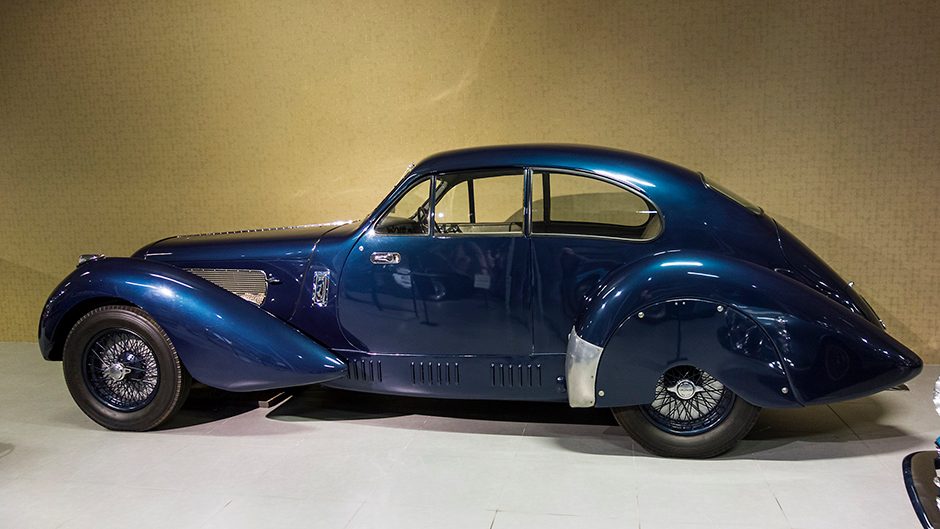
The Rarities
There are several cars that are the only survivors of their type at the Louwman, like the 1939 Lagonda Lancefield Coupe (above right), one of two built to race in the 1940 Le Mans 24-hour endurance race. Unfortunately, Germany’s invasion of France cancelled the event, and the other Lancefield V12 was written off during a land speed record attempt at the Bonneville Salt Flats.
Perhaps the most expensive car on display is a priceless 1936 Mercedes-Benz 500K Spezial Roadster, one of just 25 made. This car won the coveted Briggs Cunningham Trophy at Pebble Beach in 2006, having been awarded first prize at the same event in 1994. Meanwhile, Toyota is quite keen to part Evert Louwman from his 1936 Toyoda AA, the oldest Toyota in the world.
Although 1400 of these 3.3 litre sixes were made from 1936 to 1943, the one in the museum is only one known to still exist.
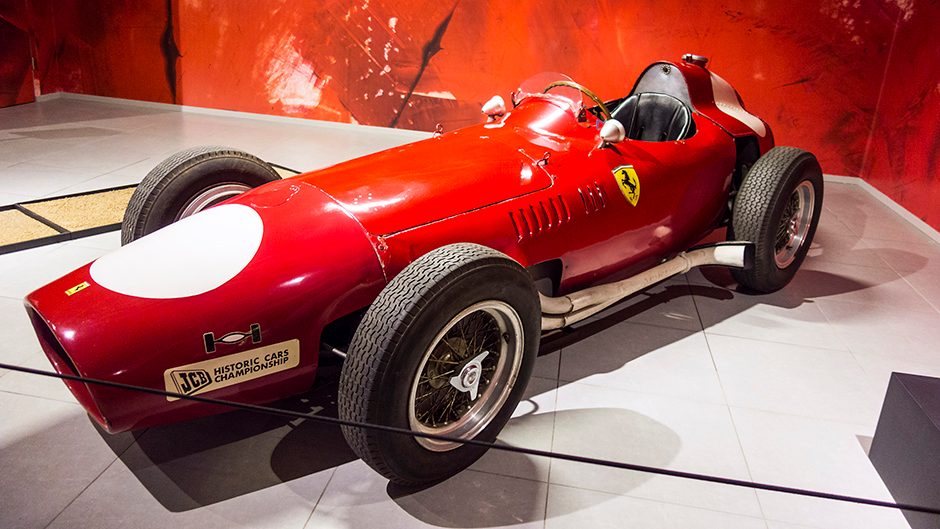
The Kiwi Connection
Perhaps the most significant race car for New Zealand is on display at the Louwman in the form of the 1957 Ferrari 675 Tasman, powered by a 2.8-litre 250bhp four to meet Tasman Series rules. Enzo Ferrari built the special 675 at the request of Kiwi driver Pat Hoare, who evidently had helped save the life of Ferrari’s trusted engineer, Gioachino Colombo, when the 2nd New Zealand Division entered Modena during World War II. Seems Colombo was about to be shot by a firing squad of communist partisans when Hoare intervened.
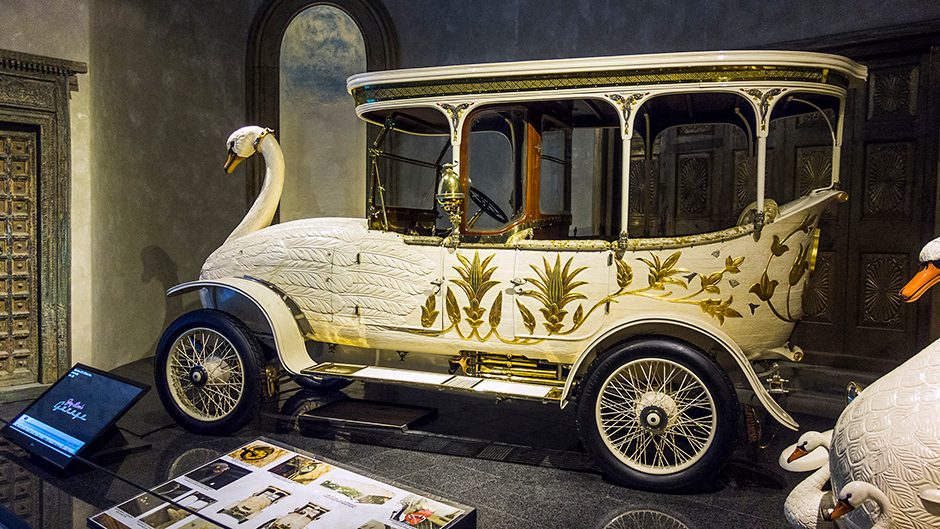
The Swan Car
The 1910 Brooke 25/30 Swan Car was made for the Maharaja of Nabha, whose family owned it for 70 years. Special features include brushes to sweep cow dung from the tyres, a swan neck that squirts scalding water to clear the road of untouchables, and lots of solid gold trim.
It’s a fitting final exhibit for a museum that showcases the automobile at its most excessive, most whimsical, and most admirable.


